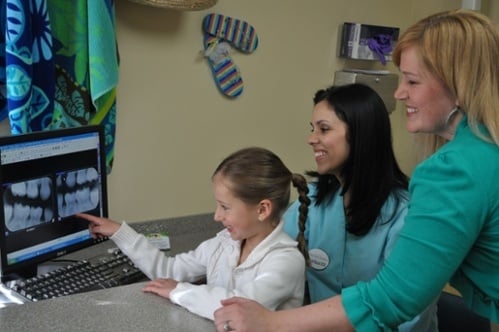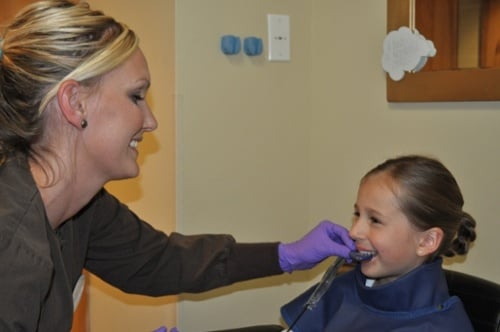As a pediatric dentist, I get to see children grow—from birth through age 18. During the short time of an office visit, my mission is to educate them about their dental health, providing a foundation for a future of successful dental care. To achieve my goals, I need to have theright tools. Digital radiography, with GXS-700™ sensors, is an important element in my toolbox—for diagnosis, patient education, and communication.

In my fifth year of practice, I have already encountered several types of imaging systems. When I first opened my practice, I knew that I was not going to use traditional filmradiography. I didn’t need the extra expense of the film, and all that goes with it—paper, charts, and hazardous developing chemicals. So, in my quest for a “chartless practice,” I started out with a phosphor-plate system. While it was still better than film, I was not satisfied with the image quality and artifacts that occur with that imaging method. Before I switched to Gendex sensors, I utilized another company’s digital system. But I found that it was not user-friendly for my staff, and it was also difficult to capture x-rays on children.
The GXS-700 sensors come in two sizes, which give us flexibility for our wide range of patient ages, shapes and sizes. With children, the x-ray experience must be comfortable. The sensors’ rounded corners and smooth edges help to achieve that goal, so the children have a positive experience. In pediatric dentistry, I am constantly amazed that kids let us do the dental procedures that we have to do. Even in the most challenging of situations, the durable sensors allow us to do a great job. For example, small children are more prone to bite and damage phosphor plates, so we have had to replace those more frequently. Even worse, those bite marks show up as artifacts on the image. We don’t have to worry about that with the digital sensor. Even if they do bite it, the sensor will not be damaged, and the images stay clear and detailed.
Another great aspect of these digital sensors is speed of image capture. GXS-700 sensors are user-friendly and ergonomic, so team members can take the x-rays quickly - digital images also are immediate, so no time is wasted. With kids on the go, that is a great accomplishment!
Digital images also give me an opportunity to communicate with all ages—the patients and their parents. We always encourage parents to be present at the time of diagnosis. On the computer monitor, I can enlarge the image, magnify, point out areas of concern, and know that the patients are actually seeing what I see in clear, vivid detail. Clinicians are trained in reading x-rays, but parents need high-quality, clearly visible images to see certain aspects, such as areas of decay. When parents understand my areas of concern, they are more inclined to accept treatment.

For the children, digital images are a great education tool. They are excited to see their x-rays and learn about their teeth, and over time, watch themselves grow. I show them how their “big kid teeth” are forming, and then teach them about proper dental care and diet so that their permanent dentition will remain healthy in the years ahead.
The Gendex sensors, with their direct USB connectivity, offer a lot of flexibility. We have USB ports in multiple treatment rooms, and we can just plug in, without docking stations, controllers or adapters. Sensors can travel with us to the hospital where some children require treatment under general anesthesia. All patient records can be obtained via the sensors and downloaded into the patient’s file in the office when we get back.
Besides the advantages to the patient, the office staff also benefits from our Gendex sensor technology. Digital information can be transmitted electronically for insurance purposes, to referring colleagues, or even to patients.
I discovered my passion for pediatric dentistry as a young girl, working for my own dentist. My enthusiasm for helping kids to maintain healthy teeth continued throughout my dental school years, and now extends to my private practice. I truly love my job, and Gendex technology makes working with my young patients even more rewarding
Jessie Banks, DDS.
Dr. Jessie Banks completed her pediatric dental residency and internship at Texas A&M University—Baylor College of Dentistry and received her D.D.S from the University of Washington in Seattle. Dr. Banks has extensive experience in working with children who require special needs through her residency training at Baylor’s Dental Clinics, Children’s Medical Center and at Texas Scottish Rite Hospital for Children. Dr. Banks has also completed her Board Certii cation in Pediatric Dentistry and is now a Diplomate of the American Board of Pediatric Dentistry. She was the recipient of the Richard C. Pugh Achievement Award for scoring in the top 3% of the nation for the written board exam.
Catalyst magazine, Issue 3, 2012

